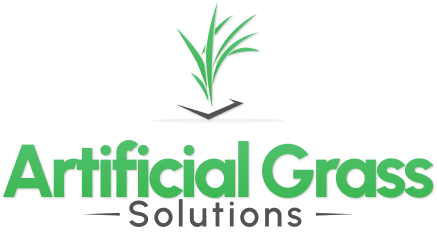Is Synthetic Turf Toxic?
Synthetic grass has gained significant popularity as an alternative to natural grass due to its low maintenance requirements and evergreen appearance. However, concerns have been raised regarding the potentially toxic chemicals of synthetic turf materials. It's essential to examine these concerns and separate fact from fiction.
The majority of synthetic turf products on the market today are designed to be safe and non-toxic. They undergo rigorous testing and adhere to strict industry standards to ensure consumer safety. The primary component of synthetic grass is polyethylene, a durable and widely used plastic material. Polyethylene has been extensively studied and deemed safe for various applications, including use in fake turf. It is free from toxic chemicals, non-allergenic, and does not pose a significant risk to human health.
Is Artificial Grass Safe for Children and Pets?
Artificial grass is generally considered safe for children and pets. The materials used in its construction, such as polyethylene fibers and infill materials, are carefully selected to meet safety standards. The fake turf undergoes rigorous testing to ensure it does not contain harmful chemicals or toxins that could pose a risk to children or pets.
In fact, artificial pet turf can provide a safer environment for children and pets like dogs compared to natural grass. It eliminates the need for chemical pesticides, fertilizers, and weed killers, which can be harmful if ingested or come into contact with the skin. Additionally, artificial grass has improved drainage systems that prevent puddles and reduce the risk of slips and falls, providing a safer play surface for children.
What is The Typical Material in Fake Grass?
The typical material used in fake turf, also known as artificial or synthetic turf, is polyethylene. Polyethylene is a durable and versatile plastic material that is commonly used in various applications, including synthetic grass. It is chosen for its ability to withstand outdoor conditions, such as UV exposure and moisture while maintaining its vibrant appearance.
Polyethylene fibers are used to create grass blades in fake grass. These fibers are designed to mimic the look and feel of natural grass, providing a realistic and lush appearance. The quality and construction of the polyethylene fibers can vary, with higher-quality artificial turf typically utilizing advanced manufacturing techniques to achieve a more natural and durable result.
Does Fake Grass Cause Cancer?
The concern about fake turf causing cancer has been a topic of discussion, particularly in relation to the infill material used in some artificial turf installations. However, there is currently limited scientific evidence to support the claim that fake turf directly causes cancer.
One of the main concerns is the use of crumb rubber infill, which consists of recycled rubber particles from tires. Some studies have suggested that certain chemicals present in crumb rubber, such as polycyclic aromatic hydrocarbons (PAHs) and volatile organic compounds (VOCs), may pose a potential health risk when there is prolonged exposure to high levels of these substances. However, it's important to note that the concentrations of these chemicals in artificial turf are generally considered to be low and below levels of significant concern.
Furthermore, the fake turf industry has been proactive in addressing these concerns. Many manufacturers now offer alternative infill materials, such as sand, organic materials, or non-rubber granules, to provide options that alleviate any potential worries related to crumb rubber.
Why Not Use Rubber Infills?
While rubber infill, specifically crumb rubber made from recycled tires, has been commonly used in artificial turf installations in the past, concerns have been raised about its potential health and environmental impacts. Here are some reasons why some people opt not to use rubber infills:
Potential Health Concerns: There have been concerns about the presence of certain chemicals in crumb rubber infills, such as polycyclic aromatic hydrocarbons (PAHs) and volatile organic compounds (VOCs). These substances may pose a potential health risk when there is prolonged exposure to high levels of them. However, it's important to note that the concentrations of these chemicals in artificial turf are generally considered to be low and below levels of significant concern. Nonetheless, some individuals prefer to err on the side of caution and choose alternative infill options.
Odor and Heat Retention: Rubber infill can have a distinct odor, especially when new. While the odor tends to dissipate over time, it can be a concern for those sensitive to smells. Additionally, rubber infill has the potential to retain heat, causing the surface of the artificial turf to become hotter, which may be uncomfortable for people and pets during warm weather.
Environmental Impact: The use of rubber infill raises concerns about the environmental impact of using recycled tire materials. Although the recycling of tires into crumb rubber helps to reduce waste, there are concerns about the potential leaching of chemicals into the environment over time, especially in areas with heavy rainfall or where the infill is in direct contact with bodies of water.
To address these concerns, many manufacturers now offer alternative infill options, such as sand, organic materials (e.g., cork or coconut fibers), or non-rubber granules. These alternatives provide similar performance benefits while alleviating worries related to rubber infill.


